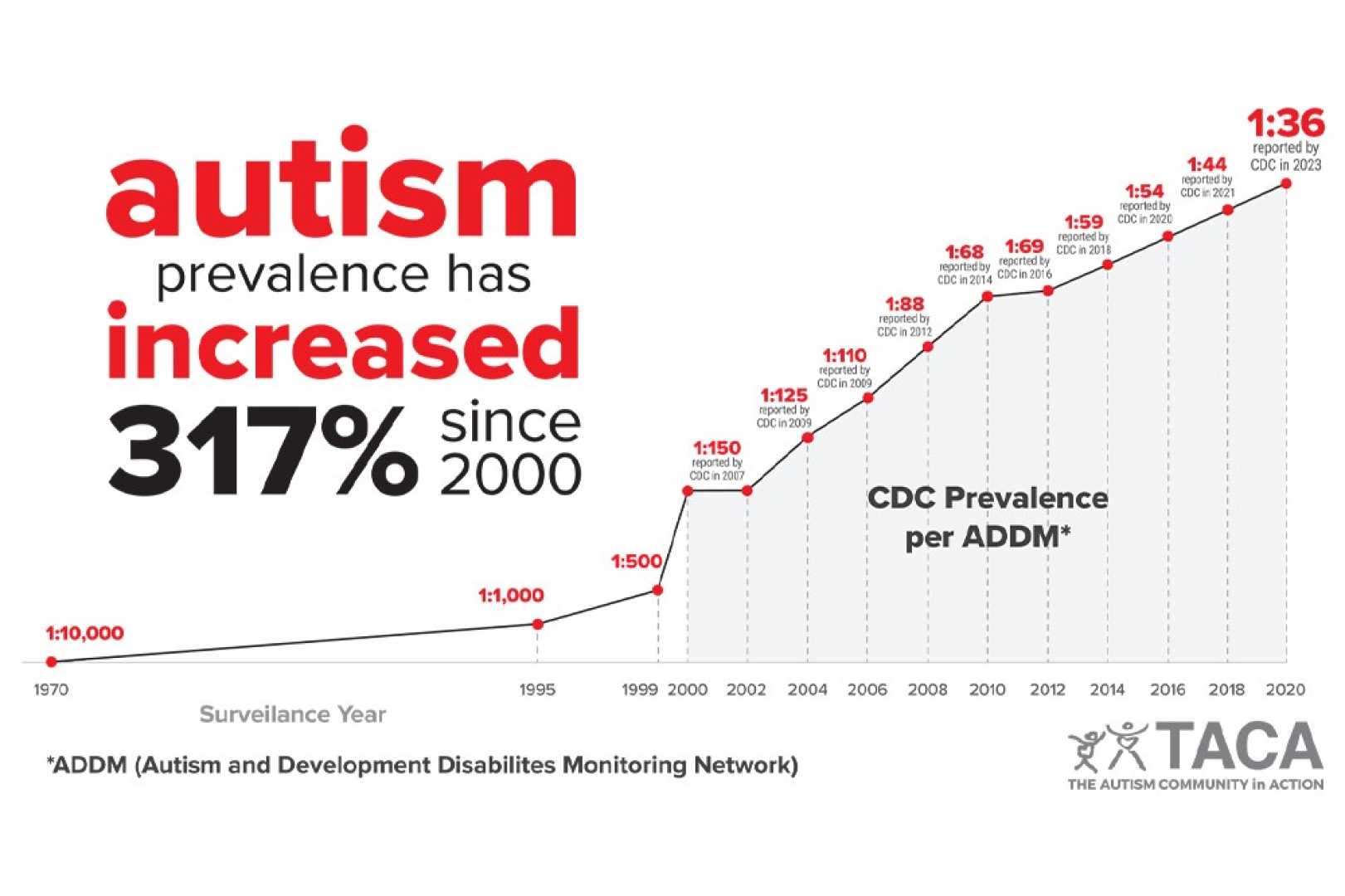Health
Autism Rates Surge Among U.S. Children, Study Reveals Alarming Trends

ATLANTA, Ga. — A recent report from the U.S. Centers for Disease Control and Prevention (CDC) reveals a significant increase in autism diagnosis rates among children across the United States. In 2022, approximately 1 in 31 children were diagnosed with autism by age 8, up from 1 in 36 in 2020.
The report, published Tuesday, highlights a trend that experts attribute to improved awareness and diagnostic practices. This increase in reported cases has stirred discussions about the underlying causes of what some have termed an autism epidemic.
In response to the growing concern, the U.S. Department of Health and Human Services (HHS) has initiated a “massive testing and research effort” to uncover the reasons behind this rise in autism diagnoses. HHS Secretary Robert F. Kennedy Jr. announced plans to identify the causes of the increasing rates by September. However, the CDC report suggests that advancements in early autism identification could account for many new findings.
The authors of the CDC report noted that improvements in accessing early detection and diagnostic services have significantly impacted autism rates. They emphasized that variations in diagnosis rates across communities are linked to differences in available healthcare services.
Gender disparities remain evident, with boys diagnosed at a rate 3.4 times higher than girls. In 2022, the report indicated this gap is beginning to narrow, not solely due to advancements in identifying autism in girls.
A shift has also been observed in the racial demographics of autism diagnoses. The latest findings indicate higher diagnosis rates among Black, Hispanic, and Asian children compared to White children. These changes have emerged alongside a notable decrease in diagnoses in affluent neighborhoods, suggesting improved identification resources are reaching previously underserved communities.
Despite these advancements, the report raises concerns over persistent disparities, particularly among children diagnosed with autism who also present intellectual disabilities. More than half of Black children diagnosed with autism at age 8 also had an intellectual disability, compared to less than a third of their White counterparts.
During a recent event in Indiana, HHS Secretary Kennedy highlighted the autism diagnosis increase, framing it within a broader narrative of chronic disease among U.S. children. “This whole generation of kids is damaged by chronic disease,” Kennedy argued. He presented a stark comparison to historical diagnoses of autism rates, asserting an alarming rise from 1 in 10,000 during his childhood to contemporary figures.
Contrary to some narratives, experts argue that the rising autism prevalence represents a positive trend in awareness and diagnosis. Dr. Andy Shih, Chief Science Officer for Autism Speaks, stated that the steady increase over recent years reflects essential progress in diagnostic criteria and screening measures enhancing early identification.
The Autism Society of America countered the notion that rising autism rates signify an epidemic, asserting that prevalence data should promote equity and access rather than incite panic. “It is likely you know or love someone with autism, and we need credible, science-based research,” said Christopher Banks, President and CEO of the Autism Society.
Dr. Kristin Sohl, chair of the autism subcommittee of the American Academy of Pediatrics, termed the report’s findings “encouraging,” emphasizing the significance of early identification in providing necessary services and supports for autistic individuals.
The data in the CDC report is drawn from 16 sites participating in the Autism and Developmental Disabilities Monitoring Network, which differs from the last report’s 11 locations. The CDC also noted that the Covid-19 pandemic led to reduced evaluations and identification of autism across these sites.
Prevalence rates vary significantly by state, with figures ranging from 1 in 19 children in California to 1 in 103 children in Laredo, Texas, highlighting geographic disparities in service availability and diagnostic practices.
In California, ongoing training initiatives for pediatricians aim to enhance the early detection and referral of children for evaluation. Meanwhile, Pennsylvania’s Medicaid policy covers disabled children across income levels, contributing to improved diagnosis rates.
Experts have acknowledged that genetics account for 60% to 90% of autism risk, calling for additional investment in autism research to further understand its causes and support individuals diagnosed with autism.












